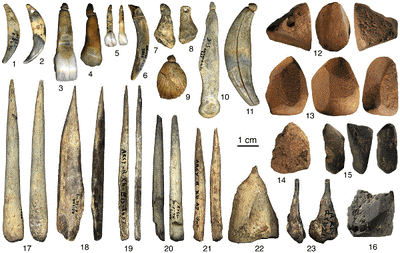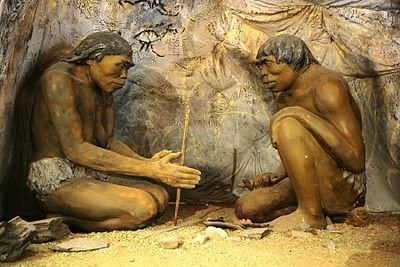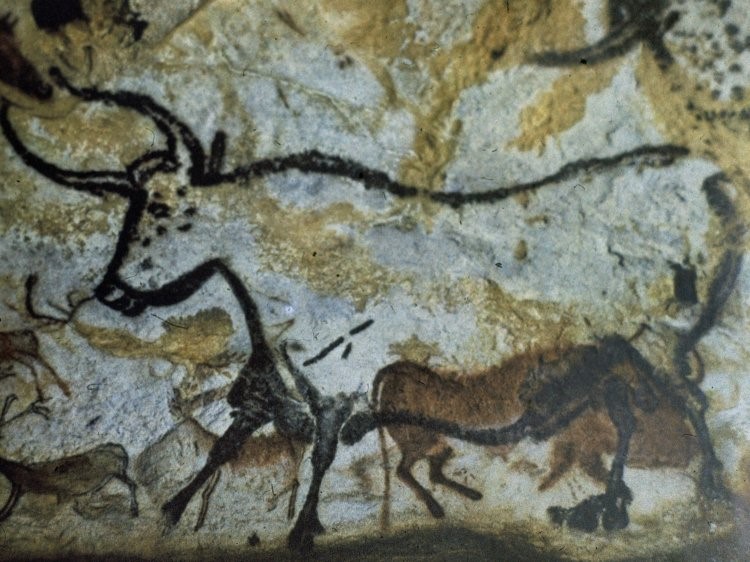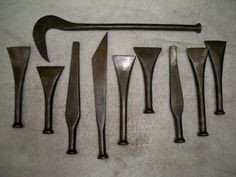Topic 2 : Evolution Of Man, Technology And Environment - History Notes Form One
What is Evolution of man? Stages to the evolution of man, discovery of fire, what are the importance of discovery of fire? Early stone age, middle stone age, late stone age, Iron Age
Evolution of Man is the gradual changes and development of man from a simple form to a more complex form.
This change takes place slowly that leads to existence of man that are different from the original.
THE THEORIES OF EVOLUTION OF MAN
The theory of evolution tries to explain the origin of man by describing the changes that our ancestors underwent until they were like modern man.
There are two theories which attempt to explain the origin of man:
THE THEORY OF CREATION (CREATION THEORY)
This theory explains that there is super natural power that creates everything. This super natural power is God.
Refer from the Holy Bible and Qur'an e.g. from Biblical knowledge (Genesis chapter 1:26) it says that: - God created man by using soil; at first, they created a man and then later a woman.
These two creatures established their relationship and this marked the beginning of human family.
THE THEORY OF EVOLUTION OF MAN (EVOLUTION THEORY)
An English man known as Charles Darwin (1809 –1882) proposed the theory of evolution of man. The theory says that: - man’s species has been changing gradually from lower stage to better stage due to environment.
Changing goes hand in hand with improvement of methods of obtaining food, cloth and shelter. The gradual change of man is called evolution.
The first man belongs to the family of primates that included Ape, Gorilla, Monkey and Chimpanzee. These animals lived in the forest walking on four limbs and their bodies covered with hair.
Because of environmental changes and diminishing of forests, they started to live in open grassland. The environment forced them to adopt new way of walking.
The forelimbs instead of walking become special for tool making and using. Forelimbs become free from walking. The walking using two limbs is known as Bipedalism
STAGES OF MAN’S EVOLUTION
1. PRIMATES (Ape, Gorilla, Monkey, Chimpanzee)
Characteristics
1. Their bodies were covered wit-h lots of hair.
2. They walked on four limbs
3. They lived in dense forest.
4. They had poorly mental abilities.
5. They totally depended on nature e.g. ate raw food
2. AUSTRALOPITHECUS AFRICAN FAMILY
This stage started about 12 million years ago (B.C) when primates changed to near man.
This stage is divided into two:
- Zinjanthropus
- Homo Habilis
A: Zinjanthropus
In this stage:
👉 Fore limbs were free from walking
👉Hind limbs were used for standing and body balance.
👉Man started to design, make and use tools.
👉Man becomes skillful.
B: Homo habilis
👉 It lived between 1,500,000 and 750,000 BC.
👉 Homohabilis become more skillful man, because was systematic tools maker.
👉 Homohabilis believed to be the direct ancestor of modern man.
👉 He had bigger brain and he was more systematic toolmaker.
The skull of those creatures was discovered at Olduvai Gorge and in Eastern and Rudolf in Kenya.
3. HOMO ERECTUS
During this stage, man was fully moving upright. He becomes more skillful tools maker than Homo habilis.
Its fossils have been dug up in Olorgesaille and near Lake Turkana in Kenya, Olduvai Gorge in Tanzania.
4. HOMO SAPIENS
Characteristics
👉 He is a true man of today
👉 Has a large brain in size
👉 Has less thick jaws
👉 He was highly skillful man
👉 He made tools by using stones and bones.
NB:
Archaeologist Dr. Leakey in Olduvai Gorge has supported the theory of evolution in 1959
Basic characteristics of human evolution.
1. Development of man’s ability to design make and use tools.
2. Ability of man to walk on two limbs (Bipedalism).
3. Ability of man to think.
4. Ability of man to domesticate plants and animals.
5. HOMO SAPIENS SAPIENS
Homo sapiens is a modern man. Homo sapiens are believed to have evolved into. Homo sapiens sapiens about 50,000 years ago. This man has a large brain and great intelligence.
EVOLUTIO OF MAN
DEVELOPMENT OF STONE AGE
Stone Age is the historical period in which man made and used stone tools. It is a period that based on man's economic activities and type of the tools used.
Stone Age is divided into three ages:
- Early or Old Stone Age
- Middle Stone Age
- Late or new Stone Age
THE EARLY OR OLD STONE AGE
Early Stone Age is the first period of Stone Age. It existed between 1,750,000 B.C and 750,000 B.C. Zinjanthropus was the only man existed in this period.
The early stone tools were pebbles and chopping. Man used these tools for killing and skinning animal flesh, digging up roots, cutting tree branches, and for defense.
Man obtained his food by hunting and gathering. In this period, man had low ability to control his environment.
In East Africa Stone Age sites are found at:
- Olorgasaille,
- Nsongezi and
- Olduvai Gorge
THE CHARACTERISTICS OF EARLY OR OLD STONE AGE
1. Man lived primitive life depending on nature.
2. Man made and used crude (poor) tools.
3. Man lived by hunting and gathering.
4. Man ate raw food i.e. meat.
5. Man walked up right.
6. Man lived in caves.
7. Man did not wear clothes.
SAMPLE OF EARLY STONE TOOLS

THE MIDDLE STONE AGE
This stage covered the period between 750,000BC to 50,000 BC.
This period man improved his stone tools.
Tools were smaller, sharper and easier to handle.
Tools used during this period were spear, Arrows, Needles, Stone picks, Knives etc.
These tools were used for; digging up roots, killing and skinning animals, cuttings & chopping.
The major event during this Stone Age was the Discovery of Fire.

Man who was scratching pieces of wood using his hands discovered fire. The more he continued scratching, the pieces of wood got heat the smoke come out, the scratch caused friction of scratched wood and led to emission of fire.
IMPORTANCE/EFFECTS OF FIRE TO MAN DURING THE MIDDLE STONE AGE
The following were the effects resulted after the discovery of fire during the Middle Stone Age
1. Man started to eat roasted food i.e. meat
2. Man started to live in cold areas.
3. Man used fire to clean bushes
4. Man used fire to provide light at night.
5. Fire used to kill small animals e.g. rabbit
6. With fireman increased working hours.
7. Man use fire to attract prey.
8. Man used fire for defense from dangerous animals like lion.
THE LATE STONE AGE (NEW STONE AGE)
In East Africa, late Stone Age started from around 50,000 BC to the first millennium AD. In this stage, man used better tools compared to the previous stone ages. Tools become sharper and smaller. Tools were stone exes, blades, spears, arrows, etc.
The tools were still largely made of stone but they were far better than those of earlier periods. Man started permanent settlement - this period marked the beginning of settled communities. In areas such as Kondoa Irangi, paintings and drawings in carves proved this fact.
The paintings and drawings show the shape of tools used and animal hunted.
CHARACTERISTICS OF THE LATE STONE AGE
1. Man used better tools compare to the previous ages.
2. Man started to domesticated plant and animal.
3. Man became food producer.
4. Increase of population.
5. It was beginning of settled communities and villages.
6. This period marked to be primarily on division of labor. Example: women become child bearers and cares while man for protecting the families and hunting
7. Informal education started in this period.

THE IRON AGE
Iron Age is believed to have started during the 1st millennium A.D.
This was the period when manmade and used Iron tools. The discovery and use of iron improved man’s standard of living.
Iron tools were discovered about 3000 years ago. The first people to make and use iron tools in Africa were the people of Ethiopia and Egypt. Iron skills and knowledge were not uniform or the same in Africa.
Famous iron Sites
The first important towns for iron smelting were:
- Meroe in Sudan
- Axum in Ethiopia
- Nok area in West Africa.
In East Africa, it is believed that man started to use iron from the First millennium A.D e.g. Iron discovered earlier in
- Engaruka
- Uvinza
- Karagwe
- Ugweno
- Western shores of Lake Victoria.
Iron tools included iron
- spears
- arrows
- Axes
- Hoes
Also, Iron technology helped early African societies to produce and use iron tools as well as to produce better weapons for defense.
THE RESULT/EFFECTS/ IMPACTS OF USING IRON TOOLS
The discovery of iron tools in East Africa led to the following effects;
1. It led to increase in food production. Man could now clear his areas for cultivation.
2. Increase in population due to more food.
3. There was emergence of specialization i.e. Iron workers (black smiths) and food producers.
4. It led to the development of political organization such as kingdom and states.
5. Tools were highly improved and more efficient
6. It led to the improvement of security due to better weapons like arrows, spears and pangas.
7. It resulted to the development of trading activities due to surplus production
EARLY IRON TOOLS



